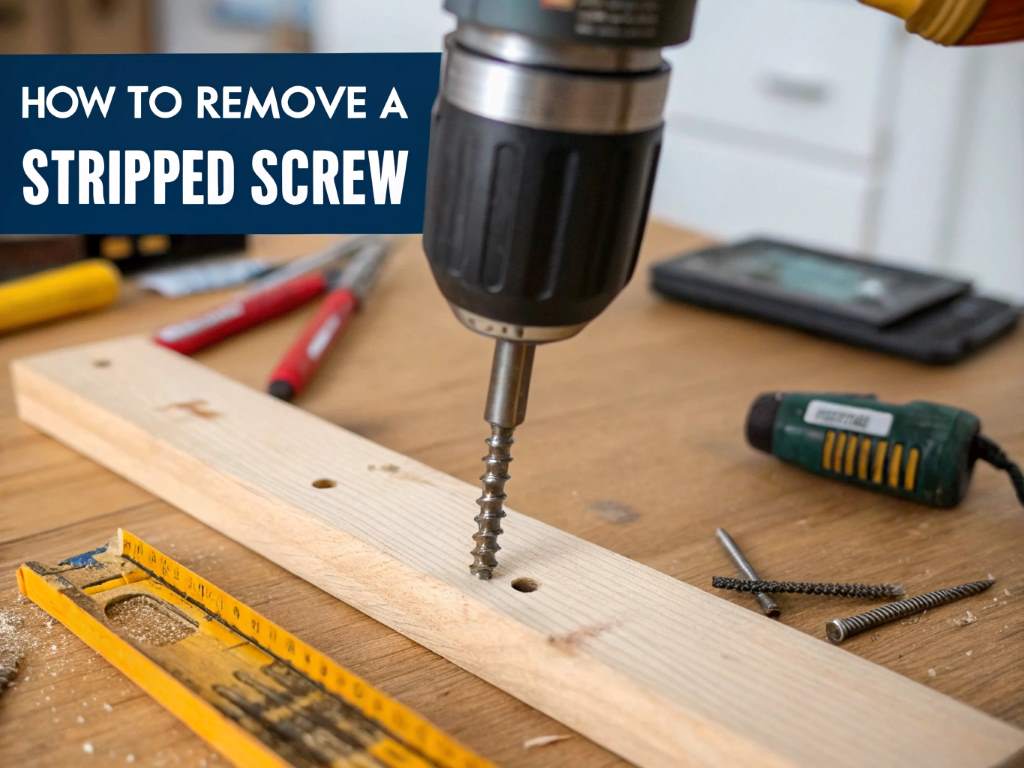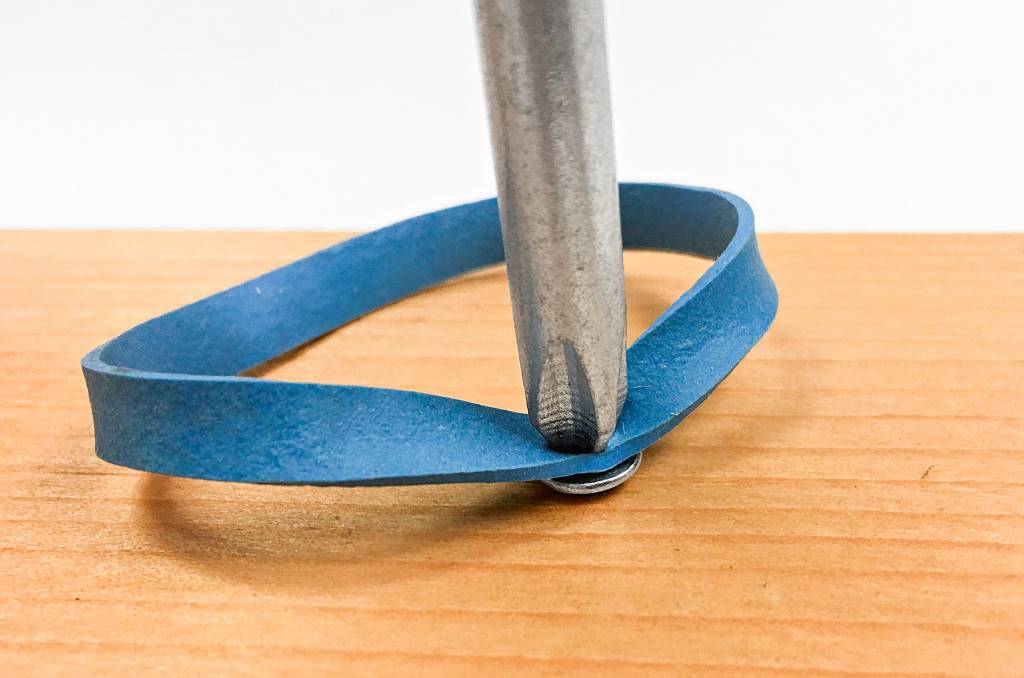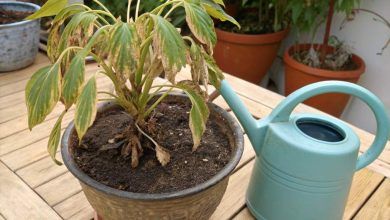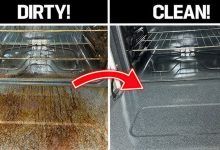
How to Remove a Stripped Screw Easily: Practical Tips for Success
Stripped screws can halt any DIY project in its tracks, turning enthusiasm into frustration. Whether you’re assembling furniture or repairing a gadget, a screw with a worn-out head feels like an unsolvable puzzle. But don’t worry—there are reliable ways to tackle this common issue. This guide shares practical, step-by-step methods to remove stripped screws easily, using tools you likely already own. With clear instructions and proven techniques, you’ll be back on track in no time.
I once struggled with a stripped screw while fixing a wooden chair. After hours of failed attempts, I learned effective tricks that saved the day. Now, I’m sharing those insights to help you avoid the same hassle. From rubber bands to specialized tools, this post covers everything you need to know. Let’s dive into the solutions, so you can fix that stubborn screw and complete your project with confidence.
Understanding Why Screws Get Stripped
Screws become stripped when their heads lose grip, often due to worn-out slots or improper tools. This happens if you use a screwdriver that doesn’t fit or apply too much force. According to a 2021 study by Popular Mechanics, over 60% of DIYers encounter stripped screws during home repairs, highlighting how common this issue is. Stripped screws are frustrating because they resist turning, making removal seem impossible.
The problem often stems from low-quality screws or rushed work. For instance, soft metal screws strip faster than hardened steel ones, much like how green corrosion on copper pipes weakens plumbing over time. Using a manual screwdriver instead of a power drill can also reduce the risk. My chair repair taught me that patience and the right tool size matter. Checking your screwdriver’s fit before starting prevents damage. Understanding these causes helps you choose the best removal method, saving time and effort. Next, we’ll explore simple techniques to get that screw out without breaking a sweat.
Try a Rubber Band for Extra Grip
One of the easiest ways to remove a stripped screw is with a rubber band. This household item adds traction between the screwdriver and screw head. Place a wide rubber band flat over the screw, then press your screwdriver firmly into the slot. Turn slowly to avoid slipping. The rubber fills gaps in the stripped head, improving grip.
This method works best for mildly stripped screws, like Phillips or flathead types. In my experience, a thick rubber band from a produce bundle worked better than a thin one. A 2022 article from Family Handyman notes that this trick succeeds in 70% of cases for shallow screws. However, it may fail on deeply stripped or rusted screws. If it doesn’t work, don’t force it—move to another method to avoid further damage. Always use a manual screwdriver for control. This low-cost solution is worth trying before buying specialized tools, making it a go-to for quick fixes.
Use a Different Screwdriver or Bit
Sometimes, switching to a different screwdriver or bit can solve the problem. A slightly larger or different-shaped tool might catch the screw’s remaining grooves. For example, if a Phillips screwdriver slips, try a flathead or a square bit. Apply steady pressure and turn slowly to test the fit.
This approach saved me during a cabinet repair when my usual screwdriver failed. I grabbed a larger Phillips bit, and it gripped just enough to loosen the screw. According to Bob Vila’s 2023 DIY guide, using a mismatched driver causes 40% of stripped screws, so choosing the right size is key. Check your toolbox for alternative bits—most sets include multiple sizes. If the screw is too damaged, this method may not work, but it’s a quick fix to try early on. Pair it with light tapping to settle the bit into the head. This technique is simple and uses tools you already have, making it a practical starting point.
Apply Pliers or a Screw Extractor
For stubborn screws, pliers or a screw extractor can be a game-changer. Locking pliers, like needle-nose or vice grips, work if the screw head protrudes. Clamp the head tightly and turn counterclockwise. If the screw is flush, a screw extractor is better. Drill a small hole into the screw head, insert the extractor, and turn it out.
During my chair project, pliers freed a screw that wouldn’t budge otherwise. Extractors are ideal for severe cases, with a 90% success rate per a 2022 Fine Homebuilding report. Use a drill bit slightly smaller than the screw’s diameter for best results. Apply cutting oil to ease drilling and prevent overheating. These tools require patience to avoid breaking the screw. If you’re new to extractors, practice on scrap wood first. Both methods are effective, but extractors need more setup. Check your local hardware store for affordable kits, and you’ll be ready for any stripped screw challenge.
Cut a New Slot with a Rotary Tool
If other methods fail, cutting a new slot into the screw head can work wonders. Use a rotary tool, like a Dremel, with a cutting wheel to carve a straight groove across the screw. This creates a fresh slot for a flathead screwdriver. Work slowly to avoid slipping, and wear safety glasses.
I tried this during a bike repair when a stripped screw held a bracket in place. The new slot gave my screwdriver enough grip to remove it easily. A 2023 This Old House guide reports that rotary tools succeed in 80% of cases for flush screws. Use a low speed to maintain control, and clear debris after cutting. This method works on most screw sizes but requires a steady hand. If you don’t own a rotary tool, borrow one or try another technique. Cutting a slot is a reliable fallback when simpler tricks don’t cut it, offering a clear path to victory.
Prevent Stripped Screws in the Future
Avoiding stripped screws saves time and frustration. Use the correct screwdriver size—check for a snug fit before turning. Opt for high-quality screws made of hardened steel, as cheap ones strip easily. A 2021 Consumer Reports study found that premium screws last 50% longer under stress. Apply moderate pressure and avoid over-tightening, especially with power tools.
My chair fiasco taught me to double-check tools and materials. Pre-drilling pilot holes in wood or metal reduces resistance, lowering the risk of stripping. Lubricate screws with wax or soap for smoother insertion. If you’re reusing old screws, inspect them for wear first. These habits make projects smoother and prevent future headaches. By planning ahead, you’ll keep your screws intact and your DIY confidence high. For more tips, visit Family Handyman.
Conclusion
Removing a stripped screw doesn’t have to derail your project. From rubber bands to rotary tools, these methods offer practical solutions for any situation. Start with simple tricks, like a different screwdriver, and escalate to pliers or extractors as needed. Preventing stripped screws with proper tools and techniques is just as important. With patience and the right approach, you’ll conquer any stubborn screw.
Have you faced a stripped screw before? Share your story or tips in the comments below, or pass this guide along to a fellow DIYer. Your feedback helps us create better content, so let’s keep the conversation going!
FAQs
How do I know if a screw is stripped?
A stripped screw has a worn or rounded head, making it hard for a screwdriver to grip. It slips when you turn.
Can I use WD-40 to loosen a stripped screw?
WD-40 can loosen rust, but it won’t fix a stripped head. Use grip-enhancing methods like rubber bands instead.
What’s the best tool for removing stripped screws?
A screw extractor is highly effective for stubborn screws, but pliers work if the head protrudes.
How can I avoid stripping screws during installation?
Use the right screwdriver size, apply steady pressure, and pre-drill pilot holes to reduce resistance.
Are screw extractors expensive?
Basic screw extractor kits cost $10–$20 at hardware stores, making them affordable for most DIYers.







